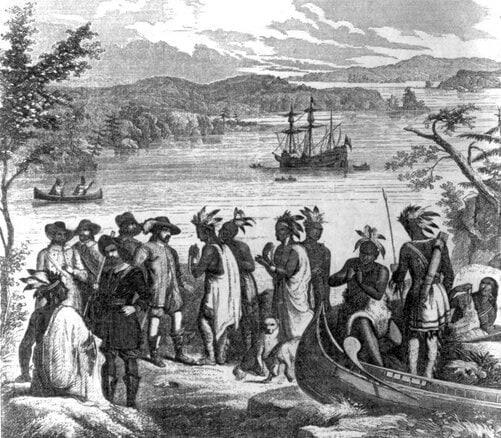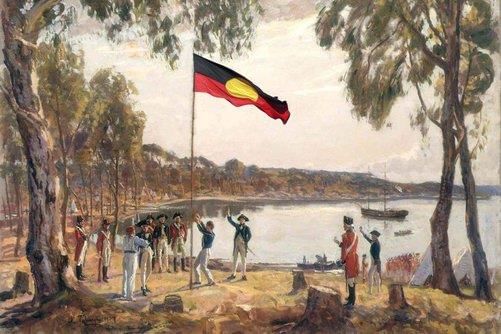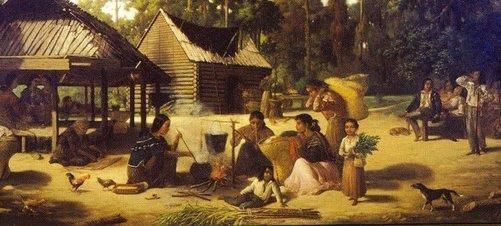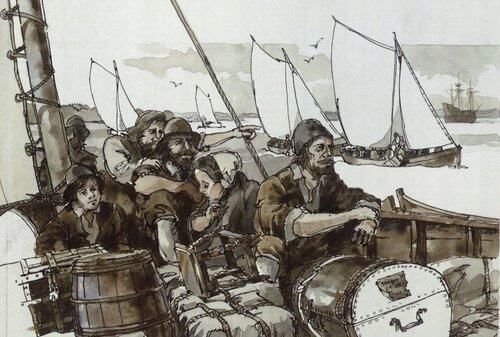|
Card: 1 / 40 |
What were the primary motivations for European nations to establish colonies in the Americas, Africa, and Asia? |
|
Card: 2 / 40 |
The primary motivations included the prospects of profit from trade, the desire for resources, and the expansion of political power.  |
|
Card: 3 / 40 |
True or False: The native peoples of North America developed complex kingdoms and felt a strong need to own land. |
|
Card: 4 / 40 |
False. The native peoples did not develop kingdoms or feel the need to own land. |
|
Card: 5 / 40 |
What characterized the trade relationships between Native Americans and European settlers? |
|
Card: 6 / 40 |
Natives viewed exchanged goods as gifts, while Europeans treated them as commodities for profit. |
|
Card: 7 / 40 |
Fill in the blank: The forced removal of the Cherokee tribe by the U.S. government is known as the ‘___ of Tears.’ |
|
Card: 10 / 40 |
It led to a massive influx of Europeans seeking fortune, the construction of railway lines, and significant industrial growth. |
|
Card: 12 / 40 |
The Civil War led to the abolition of slavery, with the northern states winning and ending the practice. |
|
Card: 13 / 40 |
True or False: The U.S. Constitution granted equal rights to all individuals regardless of race or gender. |
|
Card: 15 / 40 |
What significant change did the Indian Reorganization Act of 1934 bring to Native Americans? |
|
Card: 18 / 40 |
They became political powers, defeating local rulers and retaining administrative control while collecting taxes. |
|
Card: 19 / 40 |
Fill in the blank: The early settlers in Australia were largely made up of ___ from England. |
|
Card: 21 / 40 |
What were the consequences of the ‘Winds of Change’ in Australia during the late 20th century? |
|
Card: 22 / 40 |
It led to recognition of the rights of native peoples and the adoption of multiculturalism as an official policy.  |
|
Card: 23 / 40 |
Short Answer: Describe the living conditions and rights of Native Americans in the United States after the removal from their lands. |
|
Card: 24 / 40 |
They were often placed in reservations, faced poor health and education, and were deprived of their rights and land.  |
|
Card: 25 / 40 |
In what ways did Europeans view Native Americans differently from how Natives viewed Europeans? |
|
Card: 26 / 40 |
Europeans saw Natives as 'uncivilized' while Natives viewed Europeans as greedy and were often unaware of market principles. |
|
Card: 27 / 40 |
True or False: The Australian government made treaties with the indigenous peoples when they took over the land. |
|
Card: 29 / 40 |
What was the significance of the Declaration of Indian Rights of 1954 for Native Americans? |
|
Card: 30 / 40 |
It allowed some native peoples to gain U.S. citizenship but under conditions that respected their reservations. |
|
Card: 31 / 40 |
What was the role of the U.S. Chief Justice John Marshall regarding Native American rights? |
|
Card: 32 / 40 |
He ruled that the Cherokees were a distinct community with their own territory, but his judgment was ignored by President Andrew Jackson. |
|
Card: 33 / 40 |
What was the economic impact of the Great Depression on Native Americans in the reservations? |
|
Card: 34 / 40 |
The Great Depression exacerbated the poor health and education facilities for natives living in reservations. |
|
Card: 35 / 40 |
What were the main reasons for the differences in agricultural practices between Native Americans and European settlers? |
|
Card: 36 / 40 |
Native Americans did not prioritize land ownership and often practiced sustainable agriculture, while Europeans focused on profit-driven farming. |
|
Card: 37 / 40 |
What evidence suggests that the native peoples had a deep understanding of their environment? |
|
Card: 38 / 40 |
They could identify invisible tracks and understood climate and different landscapes. |
|
Card: 39 / 40 |
What were the main reasons that drove European settlers to establish colonies in America? |
|
Card: 40 / 40 |
The prospects of profit and the desire for expansion drove European settlers to establish colonies in America, as they sought new resources and trading opportunities.  |























